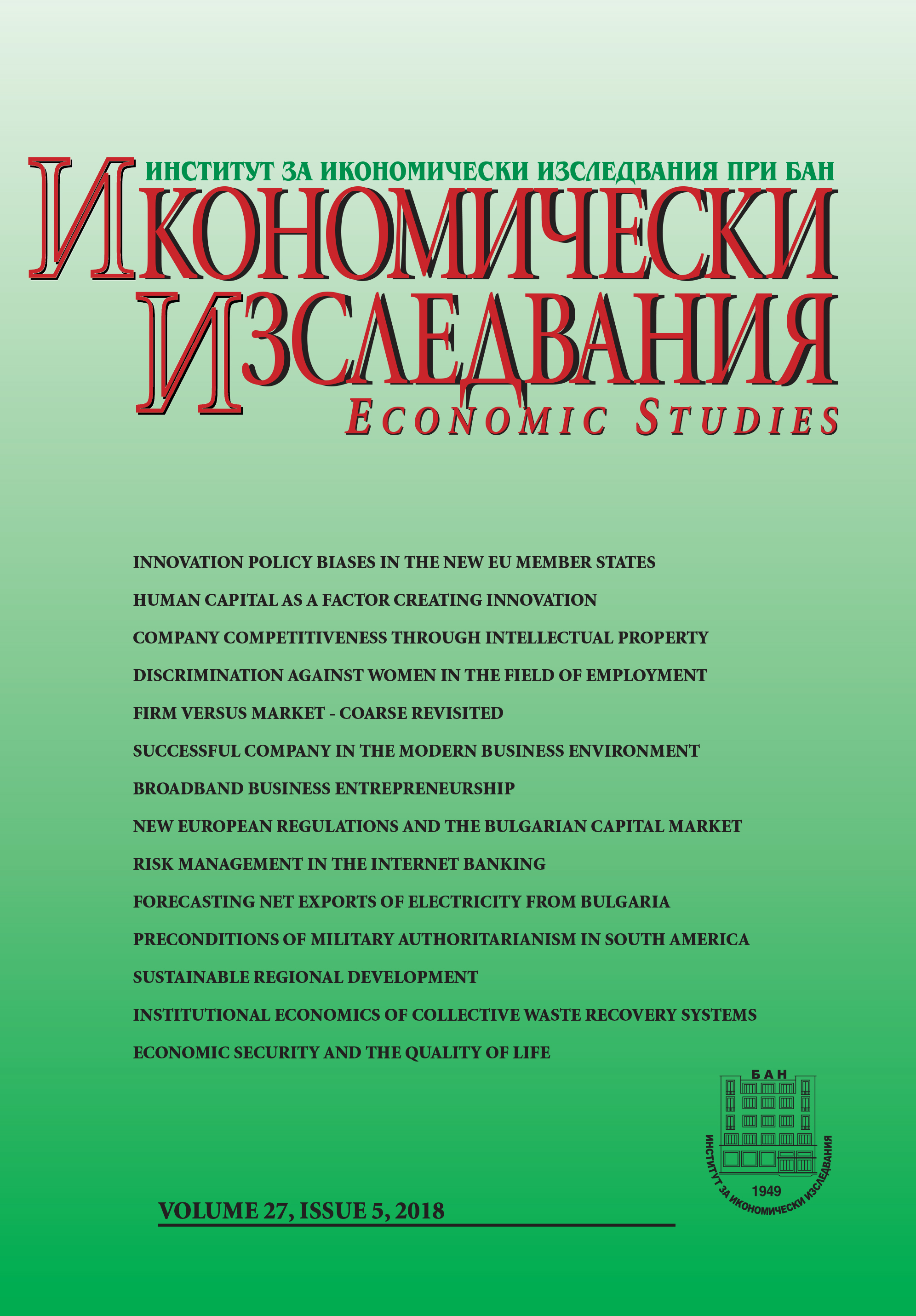Discussing Innovation Policy Biases in the New EU Member States
Discussing Innovation Policy Biases in the New EU Member States
Author(s): Zhelyu VladimirovSubject(s): Economy
Published by: Институт за икономически изследвания при Българска академия на науките
Keywords: new EU member states; innovation policy; biases
Summary/Abstract: The data show that there is a significant and persistent gap in innovation performance between new and old EU Member States. Most of Eastern European countries (EEC) are moderate innovators, except for Slovenia, while Bulgaria and Romania belong steadily to modest innovators. Obviously the new member states face more challenges in creating and implementing effective innovation policies. Therefore, the goal of this paper is to analyze biases in innovation policy of the new member states (NMS), including Bulgaria, and to suggest some measures to overcome these. It includes an analysis of EU and national EEC innovation policies, investigation of main theoretical approaches underpinning these policies, effects of path-dependency, innovation policy biases, the role of transnational corporations, global value chains, and human capital. It concludes with some propositions to the improvement of EEC’ innovation policies.The necessity of such research originates from the fact that often the EEC policymakers accept uncritically the elements of innovation policy from more developed countries without considering the specificity of local context. The uncritical acceptance of “best practices” approach leads inevitably to biased innovation policies. For example, the EEC innovation policies tend to be based on rather linear understanding of innovation with an accent on R&D and high-tech sectors at the expense of demand-side and medium- and low-tech sectors. It seems that these countries fall into the so-called “periphery paradox”. It consists in policy efforts to promote innovation, which are however detached from efforts to strengthen the local actors (firms, universities, and institutions) which demand and offer the knowledge for innovation. This way the innovation policy addresses missing actors. In order to close the innovation performance gap between old and new EU member states there is a need to modify the innovation policies in EEC as the prevailing R&D based model is less relevant compared to a model of creating local innovation capabilities.
Journal: Икономически изследвания
- Issue Year: 2018
- Issue No: 5
- Page Range: 3-26
- Page Count: 24
- Language: English

